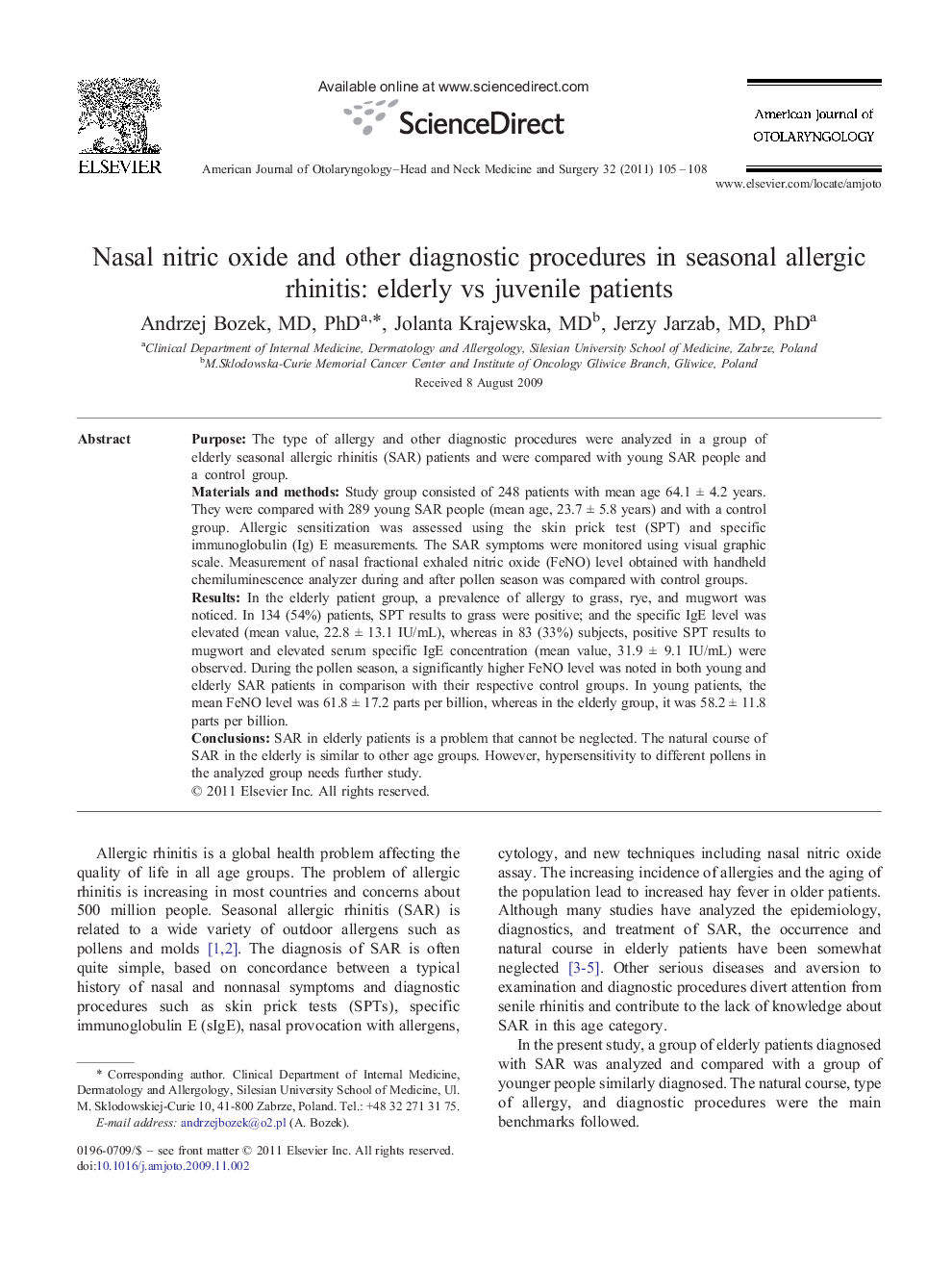| Article ID | Journal | Published Year | Pages | File Type |
|---|---|---|---|---|
| 4103602 | American Journal of Otolaryngology | 2011 | 4 Pages |
PurposeThe type of allergy and other diagnostic procedures were analyzed in a group of elderly seasonal allergic rhinitis (SAR) patients and were compared with young SAR people and a control group.Materials and methodsStudy group consisted of 248 patients with mean age 64.1 ± 4.2 years. They were compared with 289 young SAR people (mean age, 23.7 ± 5.8 years) and with a control group. Allergic sensitization was assessed using the skin prick test (SPT) and specific immunoglobulin (Ig) E measurements. The SAR symptoms were monitored using visual graphic scale. Measurement of nasal fractional exhaled nitric oxide (FeNO) level obtained with handheld chemiluminescence analyzer during and after pollen season was compared with control groups.ResultsIn the elderly patient group, a prevalence of allergy to grass, rye, and mugwort was noticed. In 134 (54%) patients, SPT results to grass were positive; and the specific IgE level was elevated (mean value, 22.8 ± 13.1 IU/mL), whereas in 83 (33%) subjects, positive SPT results to mugwort and elevated serum specific IgE concentration (mean value, 31.9 ± 9.1 IU/mL) were observed. During the pollen season, a significantly higher FeNO level was noted in both young and elderly SAR patients in comparison with their respective control groups. In young patients, the mean FeNO level was 61.8 ± 17.2 parts per billion, whereas in the elderly group, it was 58.2 ± 11.8 parts per billion.ConclusionsSAR in elderly patients is a problem that cannot be neglected. The natural course of SAR in the elderly is similar to other age groups. However, hypersensitivity to different pollens in the analyzed group needs further study.
